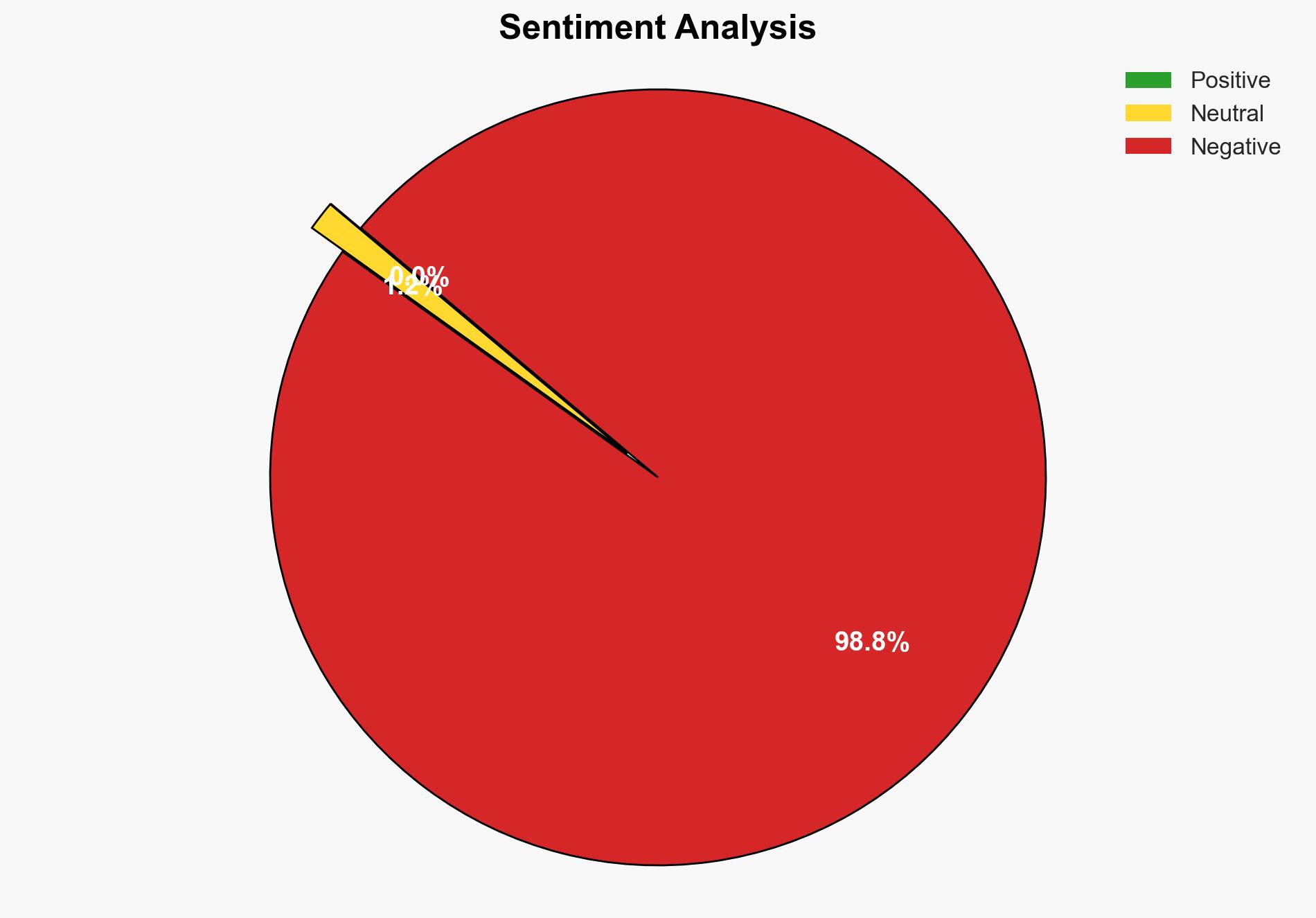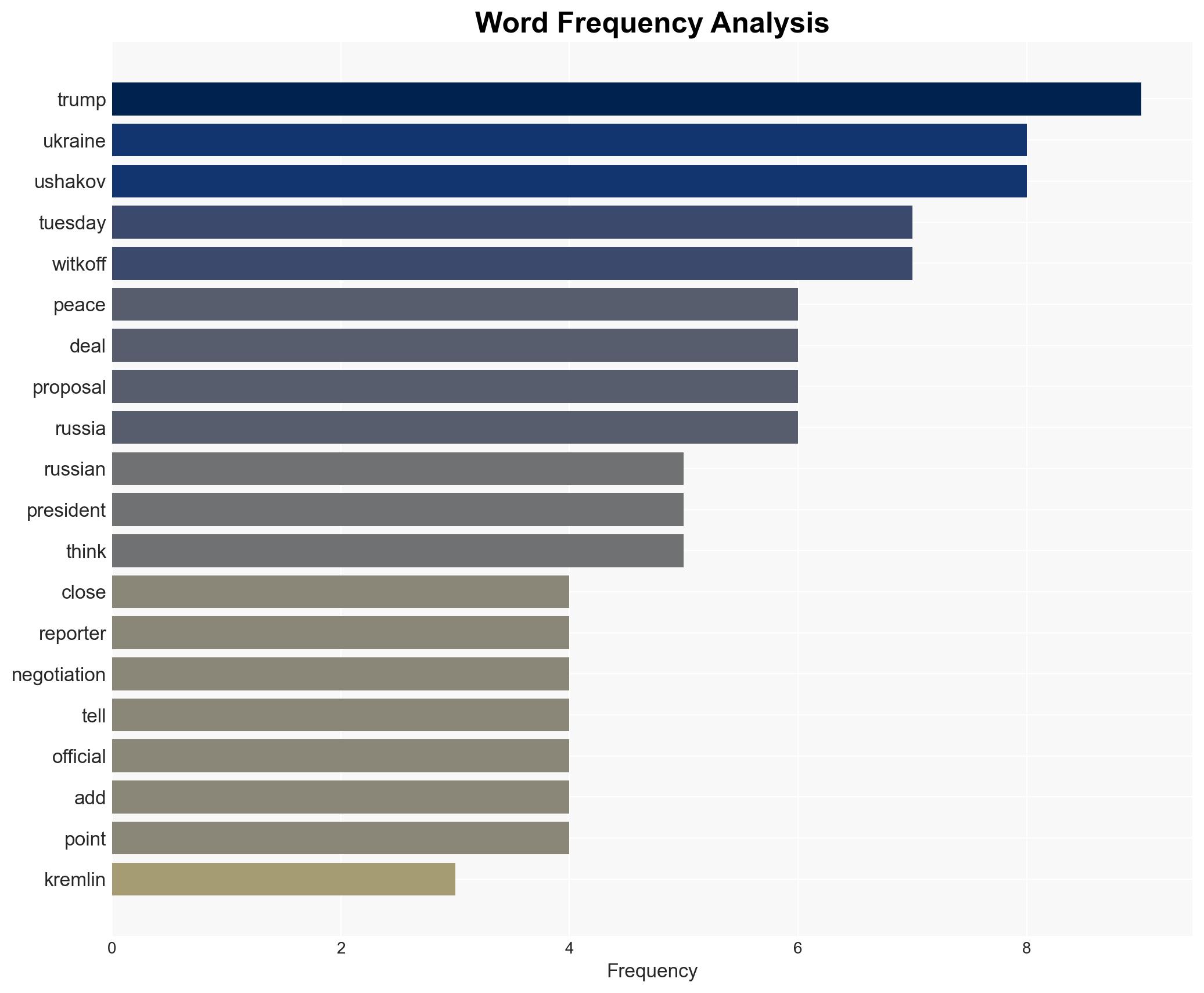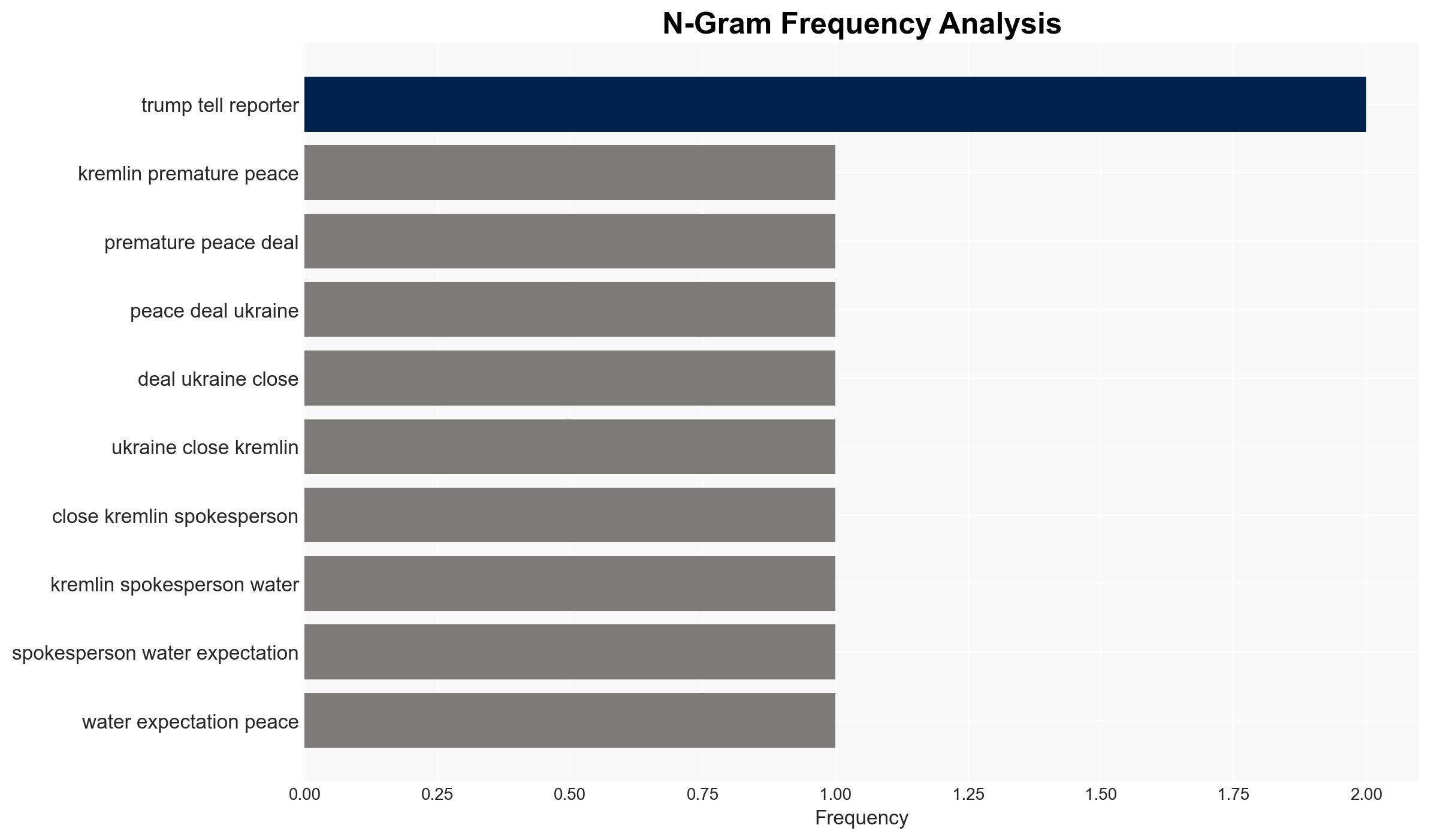Kremlin Indicates Peace Agreement with Ukraine Remains Unlikely in Near Future
Published on: 2025-11-26
AI-powered OSINT brief from verified open sources. Automated NLP signal extraction with human verification. See our Methodology and Why WorldWideWatchers.
Intelligence Report:
1. BLUF (Bottom Line Up Front)
The most supported hypothesis is that the Kremlin is using diplomatic engagements as a strategic maneuver to buy time and manage international perceptions while maintaining its strategic objectives in Ukraine. Confidence Level: Moderate. Recommended action includes increasing diplomatic pressure on Russia while strengthening support for Ukraine’s defense capabilities.
2. Competing Hypotheses
Hypothesis 1: The Kremlin is genuinely pursuing a peace deal with Ukraine, facilitated by U.S. intermediaries, to end the conflict and reduce international sanctions.
Hypothesis 2: The Kremlin is using the appearance of negotiations as a strategic ploy to alleviate international pressure and buy time to consolidate territorial gains in Ukraine.
The second hypothesis is more likely due to historical patterns of Russian diplomacy, the lack of concrete commitments, and the strategic benefits of prolonging negotiations without resolution.
3. Key Assumptions and Red Flags
Assumptions: The Kremlin’s statements reflect its true intentions, and the U.S. has significant leverage in negotiations.
Red Flags: The Kremlin’s history of using negotiations to stall for time; potential misinformation or selective leaks to shape narratives; the absence of verifiable commitments from Russia.
4. Implications and Strategic Risks
The ongoing negotiations, if insincere, could lead to further entrenchment of Russian forces in Ukraine, complicating future diplomatic resolutions. Prolonged conflict risks regional destabilization, increased refugee flows, and potential escalation into broader geopolitical confrontations. Cyber and informational warfare may intensify as parties seek to influence international opinion.
5. Recommendations and Outlook
- Enhance intelligence-sharing with allies to monitor Russian military movements and intentions.
- Increase diplomatic engagement with non-aligned countries to build a broader coalition against Russian aggression.
- Best-case scenario: Genuine peace negotiations lead to a sustainable resolution and withdrawal of Russian forces.
- Worst-case scenario: Russia uses negotiations to solidify control over occupied territories, leading to a protracted conflict.
- Most-likely scenario: Stalemate in negotiations with intermittent escalations and continued international tension.
6. Key Individuals and Entities
Dmitry Peskov, Yuri Ushakov, Kirill Dmitriev, Steve Witkoff, Rustem Umerov, Volodymyr Zelenskyy, Donald Trump.
7. Thematic Tags
Structured Analytic Techniques Applied
- Cognitive Bias Stress Test: Expose and correct potential biases in assessments through red-teaming and structured challenge.
- Bayesian Scenario Modeling: Use probabilistic forecasting for conflict trajectories or escalation likelihood.
- Network Influence Mapping: Map relationships between state and non-state actors for impact estimation.
Explore more:
National Security Threats Briefs ·
Daily Summary ·
Support us





